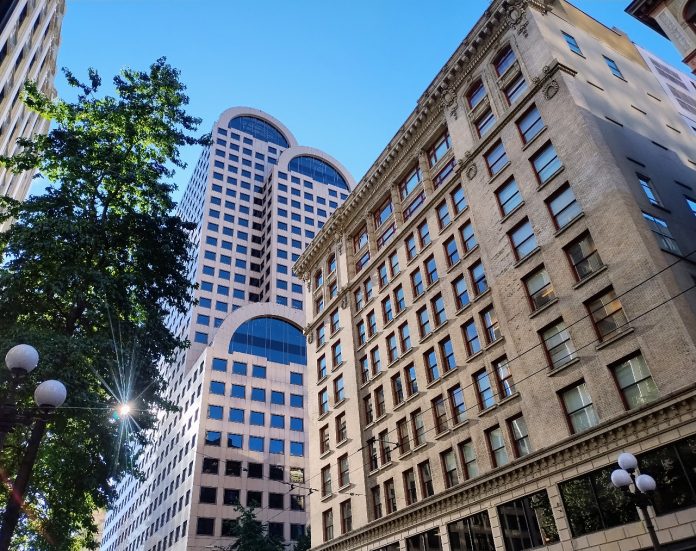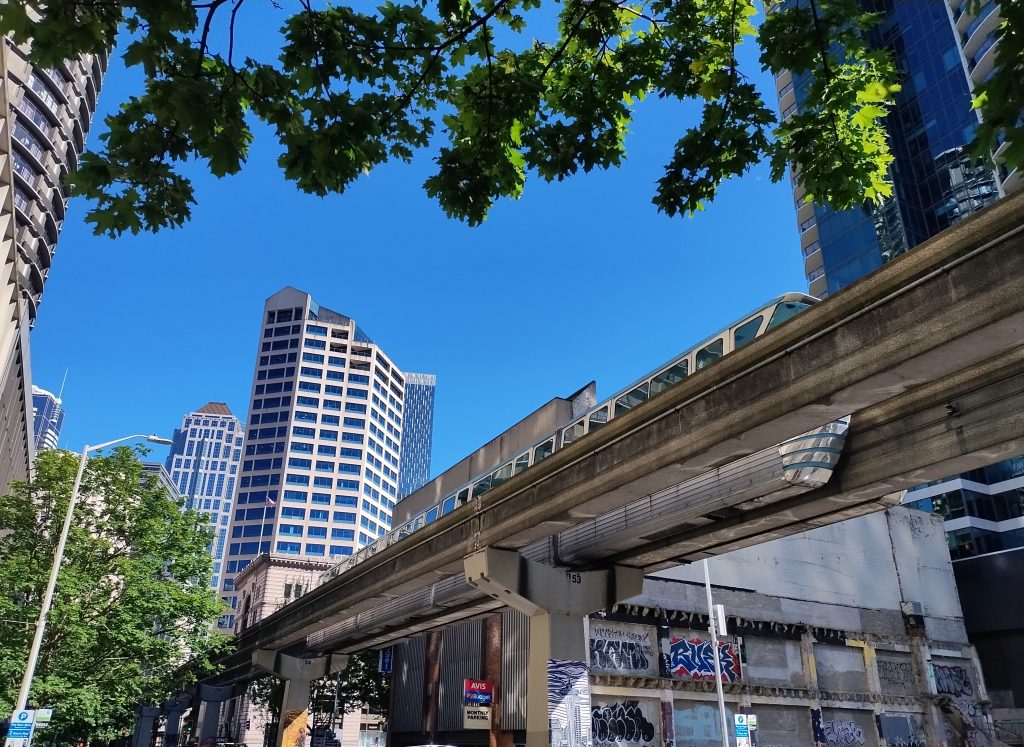
By a 8-1 vote Tuesday, the Seattle City Council approved a bill allowing downtown housing and hotel projects to circumvent the volunteer-run design review boards for the next three years, providing a quicker permitting path. The move is intended to spur development in areas of downtown sorely in need of more mixed-use development, but the bill will also serve as a major experiment in bypassing design review meetings, which have long been maligned for adding unpredictability and costs to new housing, causing a chilling effect on homebuilding.
Instead of project proposals being reviewed by a volunteer board, they will be reviewed administratively by staff at the Seattle Department of Construction and Inspections (SDCI). SDCI would also have the ability to approve some deviations from the city’s land use code — called departures — without the ability for those decisions to be appealed to the city’s Hearing Examiner, a process that can add months if not years to projects. According to a recent city review, the existing design review process adds nine months of time to projects on average compared to administrative review, not counting any additional appeal time.
With developers already making moves in response to targeted Downtown upzones that the City Council approved last year, the design review exemption is expected to prompt more builders to get their projects into the queue, particularly as the Federal Reserve starts to lower interest rates and project financing becomes easier. This design review exemption would also join new incentives to convert existing office space to residential units in the common aim of turning Downtown into more of a 24-hour neighborhood, but projects in Uptown, South Lake Union, First Hill, and a sliver of north SoDo would all be able to take advantage.

The strongest advocate on the Council for the change seemed to be Council President Sara Nelson, who argued that the city needed to take steps to advance a policy goal of having more housing downtown by reducing barriers to development.
“I always say that if we want to build more housing, we have to better align our regulatory environment around that policy goal,” Nelson said. “I want to acknowledge the concern that we’ve heard from people that that design review protects the ability and the right of people to weigh in on their physical environment by weighing in on the on buildings that are going to be in their neighborhood. And I also recognize that we definitely need more housing, especially downtown.”
Opponents of the bill argued it gives too much power to SDCI to approve departures, which can involve building features like height, upper-level setbacks, facade shapes, and street-level use type, removing opportunities for public input. Coming out particularly strongly against the bill was Friends of the Market, an advocacy organization that exists to protect the Pike Place Market historic district, which itself has its own internal commission reviewing design changes and would be fully exempt from this bill.
“The Market has guidelines that protect noise, views, and natural light and energy control, unlike any of the other historic districts or city landmarks, and so if there’s no design review in the next three years, it means that lots or buildings that may be redeveloped across First Avenue from the Market, they may shadow the Market and may take out some of the natural light,” Heather Piel, President of the Friends of the Market, told the land use committee earlier this month. “If we don’t have notice, and the decision can’t be appealed, then that really raises a problem for all of us on how to protect the Market.”
But even Councilmember Bob Kettle, whose district includes the area around Pike Place Market, appeared unconvinced by that argument. Kettle, who was recorded in 2018 pushing back on the proposed seven story redevelopment of the Safeway store in Upper Queen Anne using the design review process, voted yes after introducing an amendment that removed SDCI’s ability to issue departures when it comes to vehicle loading access, a frequent topic of concern with Belltown condominium groups.
Councilmember Cathy Moore, the lone vote against the bill, complained that the city was taking a “hodgepodge approach.” “We’re basically getting rid of design review one little piece at a time, and we don’t have any replacement,” Moore said. “I would rather us take a uniform approach, and actually have a discussion about what design review looks like.”
Moore also echoed a talking point that had been raised in a memo written by Ketil Freeman of the Council’s independent Central Staff that downtown has significant unused zoning capacity, making building incentives superfluous. But the design review exemption isn’t intended to create more capacity, it’s to ensure the capacity we already have does not go to waste. Reducing costs and providing quicker permit times could nudge projects that are on the edge of being financially feasible into viability.
Even with this bill approved, the Council will still have to return to the larger issue of design review’s permanent future whether it wants to or not, with a deadline of the end of 2025 to implement a state mandate in House Bill 1293, which added new guardrails for local design review boards. The state is requiring design standards to be “clear and objective,” necessitating a complete overhaul of Seattle’s neighborhood-specific design guidelines, which are peppered with subjective requirements. But even more significantly, design review boards will only be allowed to have one meeting to discuss a project, when currently boards can vote to ask applicants to come back for multiple meetings.
Multifamily homebuilders throughout the city can already get an exemption from design review if they include on-site dedicated affordable units as part of Seattle’s Mandatory Housing Affordability (MHA) program, as opposed to paying a fee to subsidize affordable units off-site, a move the City Council approved last year. The fact that this exemption exists and hasn’t been in place long enough to be evaluated was used as an argument against more exemptions, but Councilmember Dan Strauss, former chair of the land use committee, said he wasn’t persuaded by that argument.

“As we continue to review the design review program — because it needs to be improved, it needs to have fixes — I think it is helpful for us to have a bit of a differentiation between these pilot programs, so we can see what’s working, what’s not,” Strauss said.
Ultimately, though, there won’t be much time to review the full impact of this three-year moratorium before the City needs to enact permanent reforms to the design review process sometime next year. The Harrell Administration has been making slow progress on that work, with a study intended to inform legislation seeing a delayed release.
Some housing advocates have been pushing for design review to be permanently abolished, but most councilmembers, including land use committee chair Tammy Morales, don’t seem ready to go that far. In remarks after the bill passed out of her committee last week, Morales noted what she saw as a need for some type of design review process in communities to get buy-in on changes that impact the whole neighborhood.
“I will say as somebody who has regularly experienced frustration in knowing that there really isn’t a place for Black and brown communities to ask the question: ‘How is this project going to impact us?’, and we hear from people over and over again: the fear of density, the fear of development in their communities because they have witnessed displacement as a result of these projects, and there aren’t that many places for people to weigh in on what will happen to their neighborhood,” Morales said. “And these are important decisions — we are making decisions, we are allowing or disallowing projects that will shape the way a neighborhood looks for generations.”
For now, this time-limited exemption seems to represent a fairly broad consensus that reducing barriers to adding more housing is in alignment with city goals, a move that has the potential to move Downtown in a positive direction, with tougher conversations around design review’s role in citywide planning left to another day.
Ryan Packer has been writing for The Urbanist since 2015, and currently reports full-time as Contributing Editor. Their beats are transportation, land use, public space, traffic safety, and obscure community meetings. Packer has also reported for other regional outlets including BikePortland, Seattle Met, and PubliCola. They live in the Capitol Hill neighborhood of Seattle.

